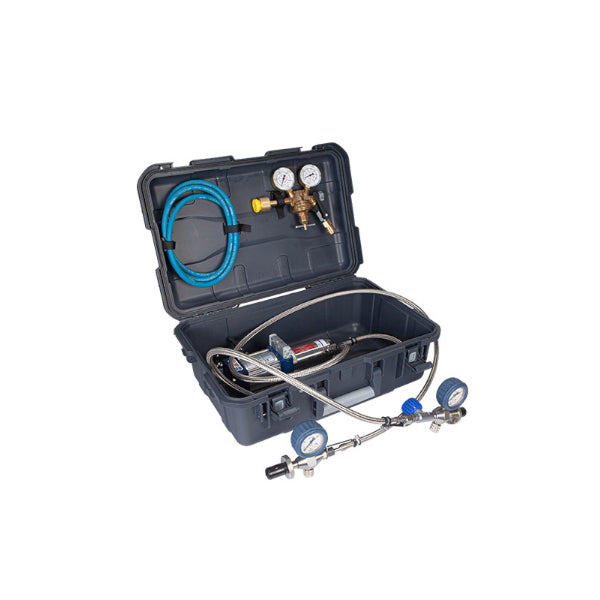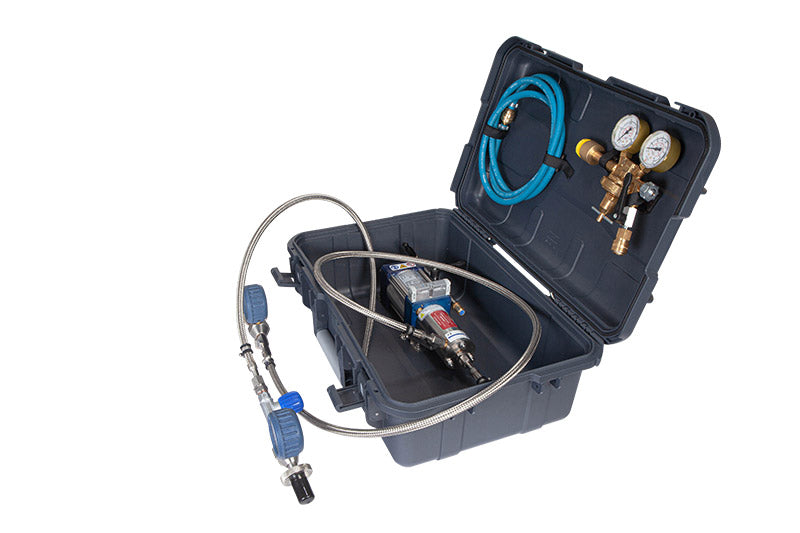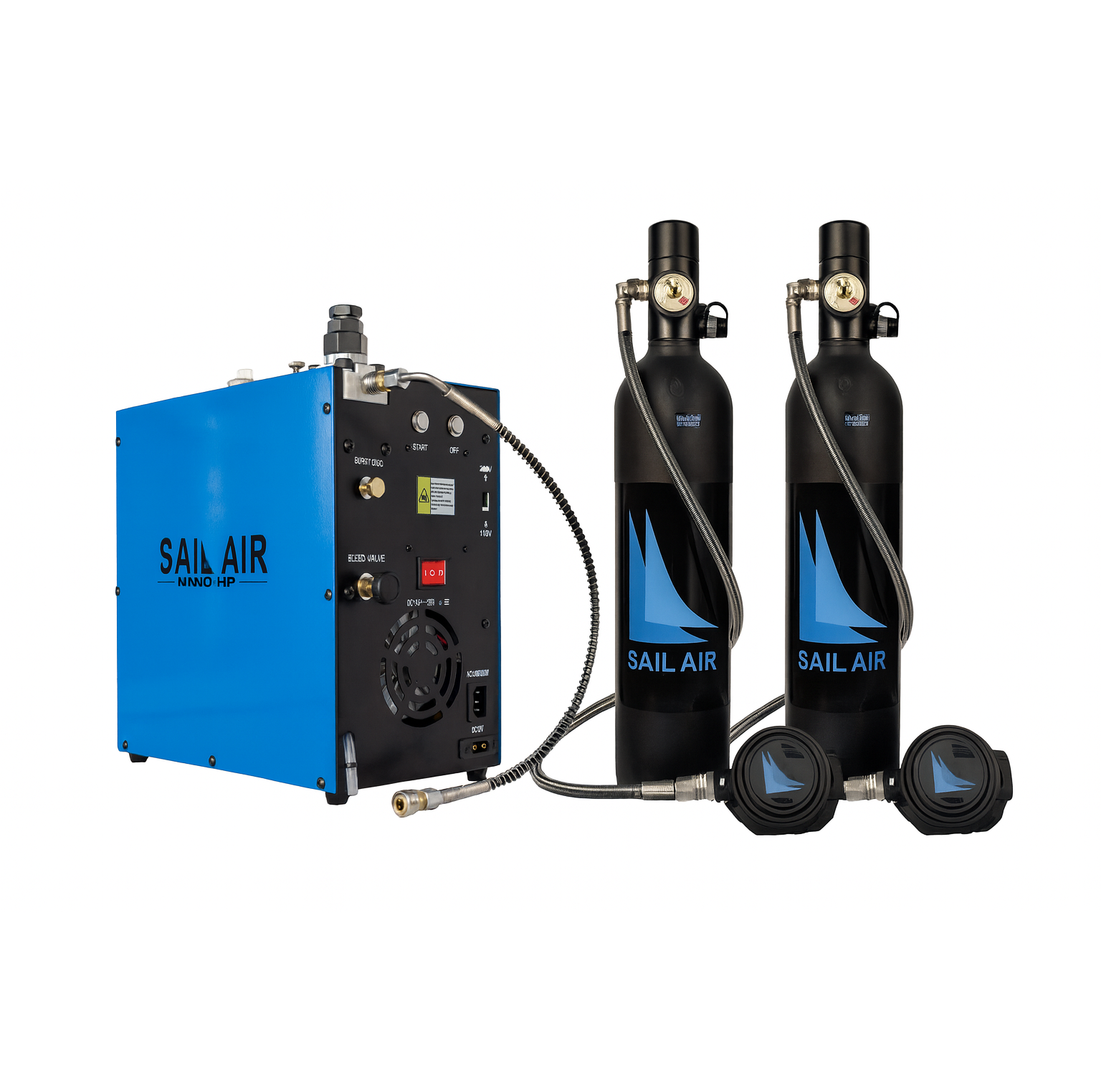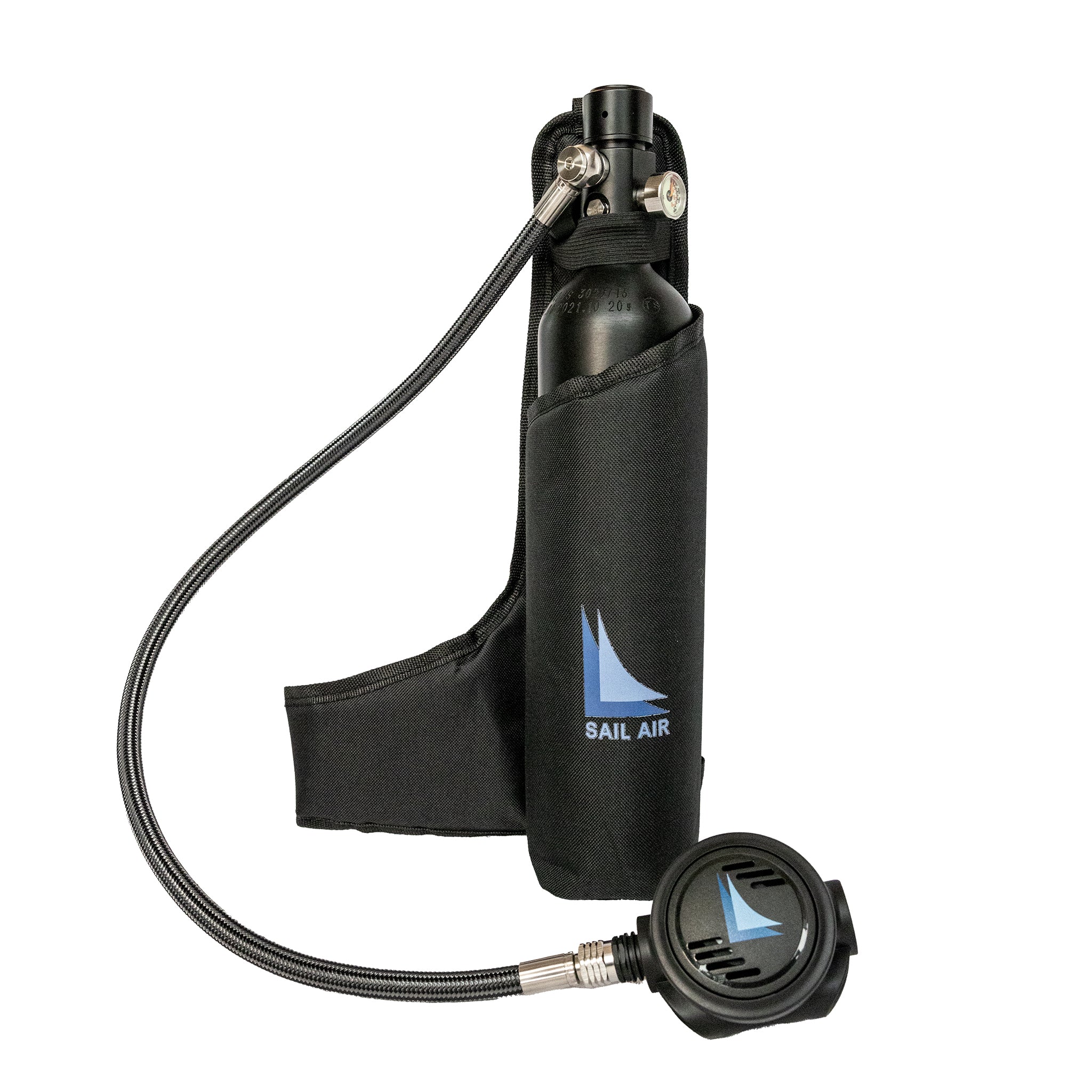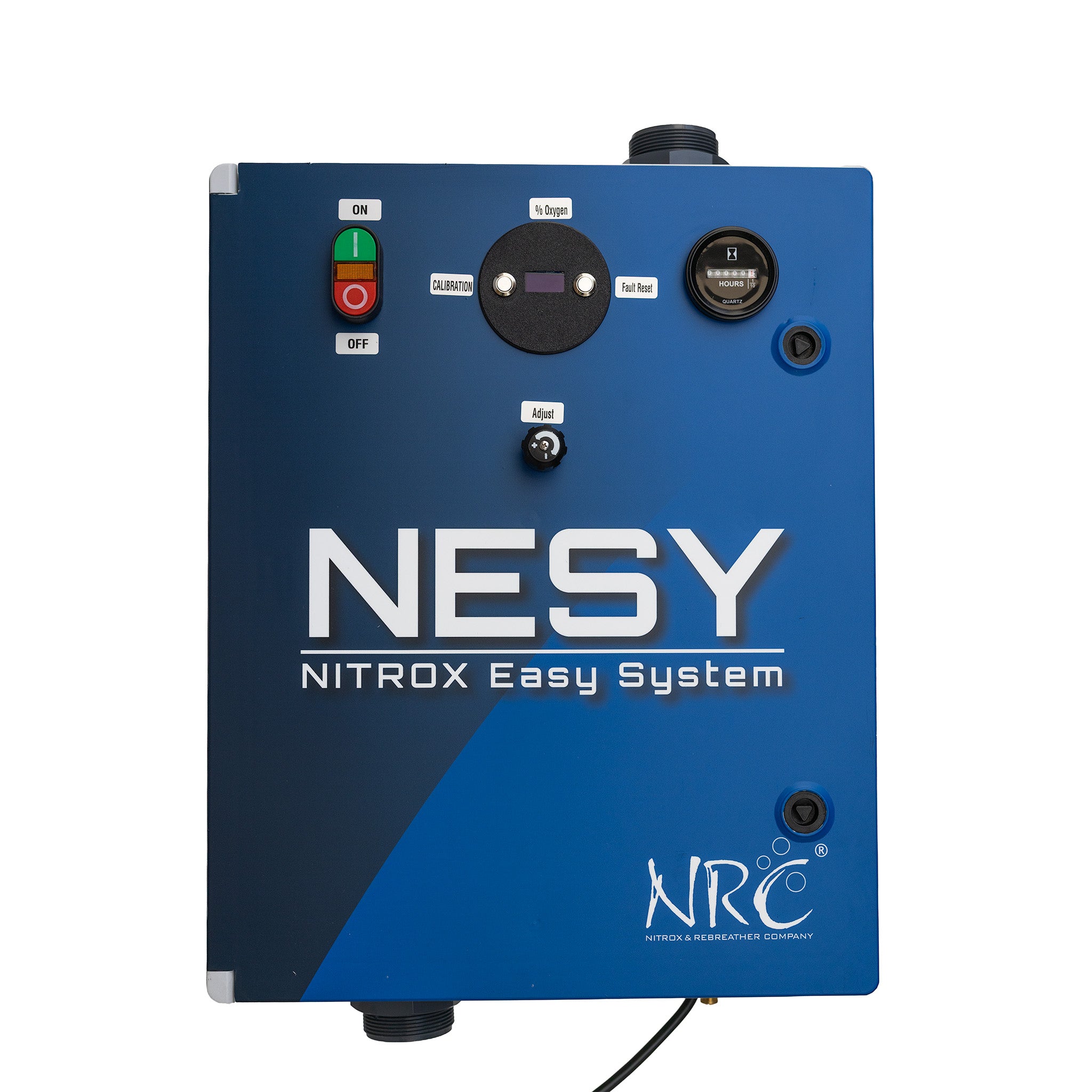There is nothing better than being able to fill fresh Nitrox tanks right on board. No waiting, no juggling oxygen deliveries, just reliable gas ready whenever your divers need it.
Producing Nitrox at sea comes with unique challenges. Space is tight, power is limited, and safety has to be built into every step. Choosing the right system is also about keeping operations smooth and your divers happy.
In this guide, we look at the two main ways to make Nitrox onboard: membrane systems and partial pressure blending. We compare their safety and efficiency so you can decide what is best for your vessel.
Factors to Consider When Supplying Nitrox Onboard
Running a dive vessel comes with challenges that land-based shops never have to think about. Every piece of equipment has to earn its place because space, power, and safety are always limited. Choosing the right Nitrox system directly affects how smoothly your operation runs.
Here are the main factors every liveaboard has to balance:
-
Space and Weight: Every square meter counts on a vessel. Bulky equipment or stacks of oxygen cylinders quickly occupy valuable space that could be used for guest amenities, storage, or other critical systems instead.
-
Power Consumption: Your generators are responsible for running the entire vessel, so it is important to ensure they are not overloaded. An inefficient gas system can add unnecessary demand and reduce the power available for other onboard needs.
-
Operational Efficiency: Between dives, your crew needs to refill several tanks in a short window of time. If the gas system is slow or requires too many manual steps, it can lead to delays, disrupt schedules, and reduce both staff productivity and guest satisfaction.
-
Remote Logistics: In many remote locations, relying on delivered oxygen cylinders is not only costly but also difficult to manage consistently. This often results in added stress, unpredictable delivery schedules, and higher operating expenses for dive operators
The system you choose influences all of these factors, which is why selecting the right solution is one of the most important decisions for your vessel.
Method 1: Nitrox Membrane Systems

A membrane system works like a molecular filter. Ambient air from a low-pressure compressor is dried, filtered, and pushed through a membrane module filled with hollow fibers. Nitrogen passes through the fiber walls more easily than oxygen, so removing nitrogen increases the oxygen percentage of the remaining gas.
By adjusting airflow and pressure, the crew can “dial in” the exact oxygen percentage they need, usually up to 40%. The enriched air, now Nitrox, is then fed to a high-pressure compressor and filled into scuba cylinders, ready for divers.
Why Membrane Systems Work Well on Liveaboards
-
Safety First: No handling or storage of pure oxygen. This eliminates one of the biggest fire risks at sea and keeps safety protocols simple.
-
On-Demand Production: As long as the compressor runs, Nitrox is available. Tanks can be filled continuously, keeping pace with busy dive schedules.
-
Easy Operation: Set the desired oxygen percentage and switch it on. Automation reduces the need for specialized blender training and lowers the risk of human error.
-
Compact and Practical: Designed to fit into limited vessel space, membrane units are built as integrated solutions that can be installed easily during construction or refit.
Points to Consider
-
Initial Cost vs. Long-Term Value: Membrane systems do cost more to purchase than a simple blending setup, but they often pay for themselves quickly. Lower running expenses, reduced crew workload, and fewer logistics mean you save both money and time over the life of the system.
-
Oxygen Limits: Most membrane systems are designed for recreational Nitrox up to 40%. This meets nearly all guest needs, but technical divers who require higher-oxygen decompression mixes (50–80%) will still need additional blending solutions.
Method 2: Partial Pressure Blending
Partial pressure blending is another way to produce Nitrox. Pure oxygen is added to an oxygen-clean scuba cylinder, then topped up with compressed air to reach the target mix. The exact percentage is calculated using Dalton’s Law of Partial Pressures.
Why Partial Pressure Blending Can Work on Liveaboards
-
Low Startup Cost: The equipment is minimal, making this method affordable to set up.
-
Flexibility for Technical Diving: Unlike membrane systems, partial pressure blending can produce high-oxygen mixes above 40%, which is valuable for technical dive trips.
-
Scalable for Small Groups: On vessels with fewer divers or less frequent Nitrox use, the slower fill rate is less of a problem and keeps costs low.
Points to Consider
-
Safety Protocols: Handling pure oxygen at sea increases fire risk, and all equipment must be oxygen-clean.
-
Labor and Time: Each tank is blended individually, which can become slow and crew-intensive on larger vessels.
-
Logistics: Oxygen cylinders must be sourced and transported, which can be challenging in remote areas.
Membrane vs. Partial Pressure for Your Liveaboard
|
Feature |
Membrane System |
Partial Pressure Blending |
|
Safety Profile |
No pure oxygen handling; reduced fire risk. |
Requires handling of pure O₂; higher safety protocols are needed. |
|
Ease of Operation |
Quick, continuous, and simpler to operate. |
The manual, tank-by-tank process requires a trained blender. |
|
Operational Cost |
Lower ongoing cost: no oxygen purchases; runs on air. |
Ongoing cost for oxygen supply and O₂ cleaning. |
|
Speed & Efficiency |
Fast, continuous production for multiple tanks. |
Slower, one cylinder at a time. Best for small groups. |
|
Space Requirement |
Compact, integrated design. |
Requires storage space for oxygen cylinders and a blending setup. |
|
Best Fit |
Professional liveaboard operations with high Nitrox demand. |
Smaller operations or trips requiring high-O₂ technical mixes. |
Continue reading: Nitrox Membrane System vs Partial Pressure Blending
The Right Mix for Safe and Reliable Nitrox at Sea
For liveaboards, the core of Nitrox production is best handled by a membrane system. It keeps filling consistently, eliminates the risks of handling pure oxygen, and allows the crew to supply recreational mixes quickly and safely.
Partial pressure blending still has its place. For technical gases above 40% O₂ or helium-based mixes, it remains the reliable method. This is why many professional vessels pair a membrane system for daily use with a booster-assisted blending setup for specialized gases.
Operators who want reliability at sea often choose systems built to German quality standards. NRC has decades of experience in gas system engineering, with solutions that are compact, durable, and designed specifically for the challenges of marine environments. From continuous Nitrox production to safe handling of helium and high-O₂ gases, NRC provides equipment that makes operations simpler and safer for both crew and guests.
Explore NRC’s Nitrox membrane systems and see how we can help your liveaboard grow with reliable gas, efficient operations, and satisfied guests.
Frequently Asked Questions
Can any scuba tank be filled with Nitrox?
No, not every tank can be filled with Nitrox. Standard scuba tanks and valves are fine for mixes up to 40 percent oxygen when using a membrane system. For higher oxygen blends, the cylinders must be oxygen-clean and maintained to that standard.
How much maintenance does a membrane system need at sea?
The NRC AIRPRO system itself is very easy to use and requires minimal maintenance, making it ideal for liveaboards and remote installations. It comes pre-installed and operates automatically, helping to reduce the effort needed for setup and upkeep.
What if I need to blend technical diving gases with more than 40% oxygen?
A membrane system provides the recreational mixes most liveaboards need, such as EANx32 or EANx36. For higher oxygen or helium blends, a partial pressure station with a booster pump is the best option. This setup lets you handle technical gases when required while keeping daily Nitrox production efficient.

